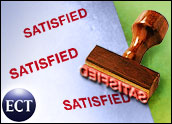
I had a wide-ranging conversation the other day with a software company CEO in Silicon Valley. If anyone could have insights into what’s been going on lately in the software industry it would be this guy. He’s a former Oracle executive — that doesn’t exactly limit the field much does it? — and a keen observer of the front office software market. I won’t use his name because we were discussing something else for background, mostly the future of the enterprise software business.
For our purposes, the relevant part of the conversation was about consolidation in CRM. Perhaps his most cogent observation was that whoever controls the basic customer information controls the front office. By customer he meant someone who has bought something, not “customer” in the retail sense of “What can I do for you?”
Supporting the Challenge
His point, and it’s a good one, is that in order to have the customer information, you need to have a data schema that can support it. That means a schema that supports things like products, invoices, purchase orders and much more. If you think this is beginning to sound like the kind of data stored in an ERP system, that’s because it is and it exposes one of the greatest challenges for CRM in the immediate future.
Until now the most successful CRM companies focused on their core applications and left integrating with the accounting and customer data to integrators. In that era, integration was the way things got to work together. Many customers objected and resented the high costs of integration, but there were not many choices. There were no grand “uber” applications that brought the front and back office data together. In fact for a good long time in CRM, getting marketing to talk to sales or getting CRM to behave in consistent ways across different channels was a big deal and just about everyone with pretensions of having a suite worked very hard on that data model.
In that view, on demand CRM might be seen as a side show. Customers who wanted to reduce the cost of CRM deployment went with a solution that virtually eliminated hardware and functioned more or less in standalone mode. On demand didn’t integrate with much else initially but it gave the manager — especially the sales manager — the ability to get a handle on his or her universe. All that’s changing but the question that is on a lot of minds is, can it change quick enough.
Changing the Game
Now, however, the last few weeks have dramatically brought home the importance of having all the customer data integrated and available. With Oracle buying up PeopleSoft and, soon, Siebel, the game is changing and I am not sure everyone sees it. Oracle will soon own some very large pieces of back and front office technology as well as the underlying stack which will position it astride of the enterprise software industry.
To paraphrase my CEO friend, the best way to integrate in enterprise software is to do so sparingly. Rather than trying to bring together numerous smaller applications in a best of breed approach, he believes you should start with a larger suite and only integrate when necessary — and then only around the edges of the applications where innovation is most rampant. That logic seems to support the continuing consolidation we have seen in the CRM market over 2005, led by Oracle.
But what works for the enterprise may not work so well for the SMB for numerous reasons. SMBs have similar needs for front and back office solutions, but they are much smaller, and for them, integration of myriad applications is much less an issue, if only because they have fewer people to use the applications. Cost is a paramount concern at the SMB level — no one wants to shell out big bucks for a soup-to-nuts suite of software and there are no deep pockets to fix an integration that goes wrong. For these reasons a different logic operates.
Knowing Your Customers
SMBs seem to naturally gravitate to pared down applications that offer value that is intuitively obvious. Perhaps that’s why Sage Software is doing so well. In its recent annual awards program, CRM Magazine gave top honors to Sage’s entire CRM suite including ACT!, SageCRM, and SalesLogix. Most importantly, the company offers pre-built integration between its CRM products and a big stable of accounting software providing to the SMB market what Oracle wants to do for the enterprise.
With literally millions of users of its combined product families and well over one billion dollars in revenue, Sage has developed a commanding position in the SMB market. Moreover, Sage’s revenues actually understate its reach given that its sales model is completely oriented to the channel. And its channel partners supply a good deal of added value with services, support and most important, domain expertise. Front office, back office, domain expertise — that seems to be everything you’d want in a software company partner. But it is taking a long time to get there.
Denis Pombriant is a well known thought leader in CRM and the founder and managing principal of the Beagle Research Group, a CRM market research firm and consultancy. Pombriant’s latest white paper, Adding Sales to the Call Center Agenda, summarizes his recent research in the call center industry. In 2003, CRM Magazine named Pombriant one of the most influential executives in the CRM industry. Pombriant is currently working on a book to be published next year. He can be reached at [email protected]
























































